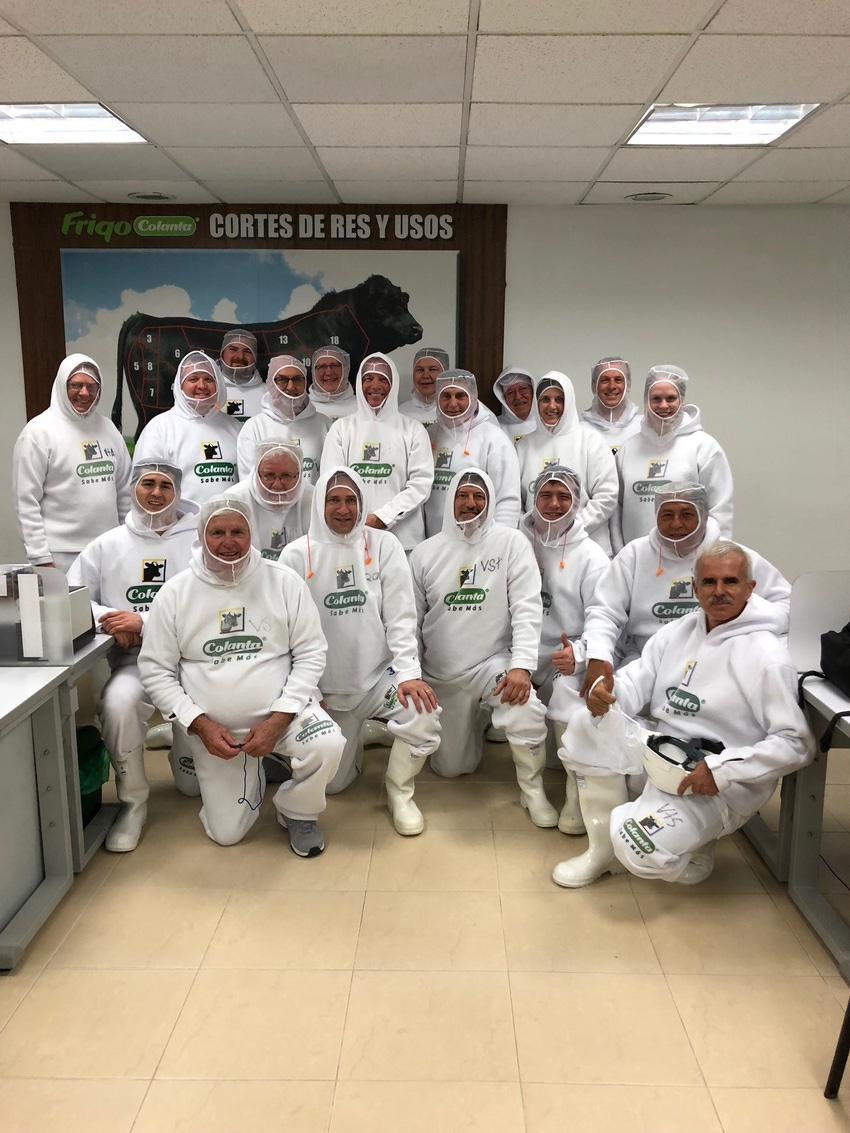Soybean farmers have opportunity to see international markets and customers firsthand.
February 14, 2018

Ten soybean farmers from Minnesota and three from North Dakota recently returned from a week-long mission to Chile and Colombia hosted by the Minnesota Soybean Research & Promotion Council (MSR&PC). There, participants were able to meet large buyers of U.S. soybeans, tour emerging markets and see for themselves where their soybean checkoff dollars are invested overseas.
“As a soybean farmer, we bring our soybeans to the local elevator and don’t know exactly where they end up,” said Rodd Beyer, a Wheaton, Minn., farmer and participant on MSR&PC's See for Yourself mission. “Being a part of this trip allowed me to meet those who rely on our quality product and see what my checkoff dollars are doing to promote our product in other countries.”
Starting in Chile, the group learned about the research being done on new varieties, diseases and pests at the University of Minnesota and North Dakota State University research plot outside Santiago, Chile, which was funded, in part, by the soybean checkoff.
“The research plot was something I was not aware of,” Clarks Grove, Minn., farmer Jerry Demmer said. “Soybean breeders utilize this plot during our winter months in Minnesota. Doubling the growing season allows breeders to do their job more efficiently and effectively, ultimately getting the information back to the farmer even faster.”
The farmers also had the opportunity to see an emerging market for U.S. soybeans: aquaculture. Chile is the number-two producer of salmon, behind Norway. In 2017, the country imported 5,000 tons of soy protein concentrate from the U.S., making Chile the fourth-largest global market for the U.S. product.
“In today’s farm economy, every market for soybeans matters,” Demmer said. “Salmon may not consume a large amount of feed, but it is still an emerging market and an opportunity to get more of our beans off of the market. Big or small, they all matter.”
While in Chile, the group was able to tour the two-year-old Cargill Salmon Innovation Center -- the most advanced center in the world. Currently, the facility researches salmon disease and nutrition. The farmers were able to see a salmon hatchery, farm and processing plant.
Participants then traveled to Colombia, a country that depends heavily on U.S. soybeans.
“We met with Colombia’s number-one and number-three feed importers. It was great to hear how much of their soybean meal comes from the U.S.,” Beyer said. “The free trade agreement between the U.S. and Colombia is an added bonus when deciding who they will buy from.”
Implemented in 2012, the trade deal allows Colombia to import soybeans from the U.S. with a 0% tax. In comparison, importing from a U.S. competitor like Argentina would involve a 41% tax burden.
“Hearing firsthand from the companies buying our beans how valuable the free trade agreement is was outstanding,” Beyer said. “It makes our beans even more appealing. We can only hope this agreement continues.”
As Colombia embarks on a presidential election in March, the trade agreement may be at risk, with two of the candidates being against free trade.
The visit to Colombia focused a lot on the livestock and feed market, since Colombia hopes to increase its production and consumption of pork.
“As Colombia continues to promote pork and increase their supply, this will also increase their need for more feed,” Beyer said. “The U.S. is ready to supply their demand.”
Carlos Maya, executive director of Pork Colombia, the country’s checkoff association, told the group that Colombia is expected to increase production by 30%.
“Colombia is a rising star for U.S. soybeans,” said Taylor Shroyer, participant from Nerstrand, Minn. “The amount of soybeans imported to Colombia continues to grow. It’s a trade success story.”
In 2017, Colombia was the fourth-largest importer of U.S.-origin soybean meal and the fifth-largest importer of U.S. soybean oil and imported a total of 151,000 tons of U.S. soybeans.
“It’s definitely an eye-opening experience,” Beyer said. “It makes you think beyond the local elevator. Other countries rely on our product, and I now understand why we need to continue building relationships and investing our time and energy into promoting our beans overseas.”
MSR&PC tentatively hosts a See for Yourself mission every other year, with applicants chosen through an application process.
You May Also Like

.png?width=300&auto=webp&quality=80&disable=upscale)

